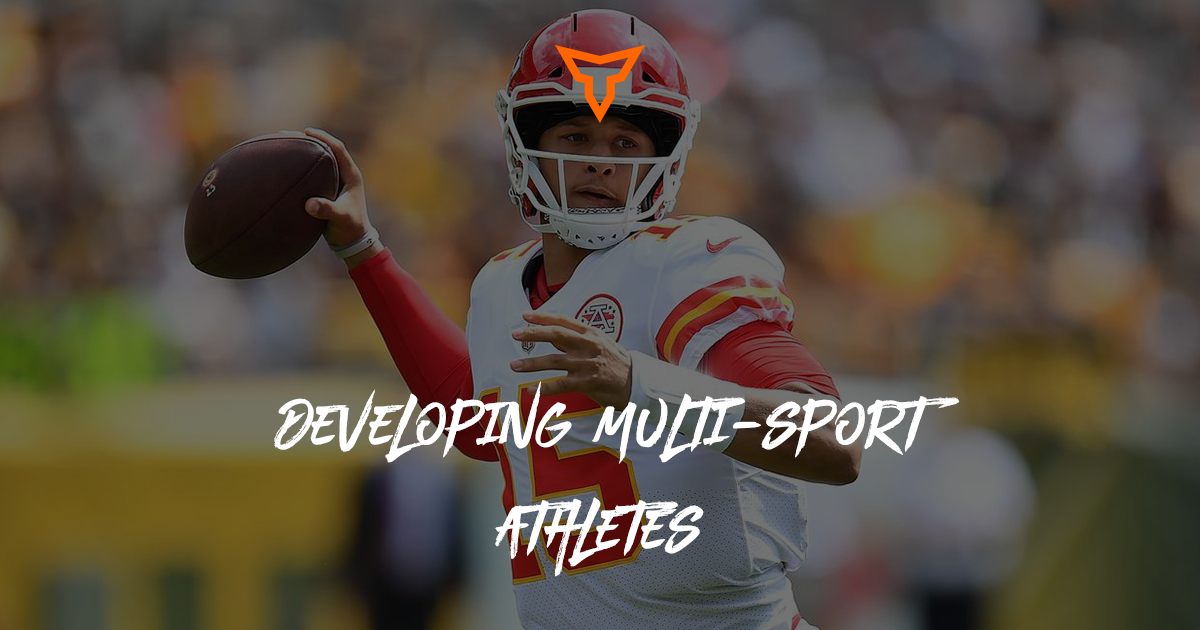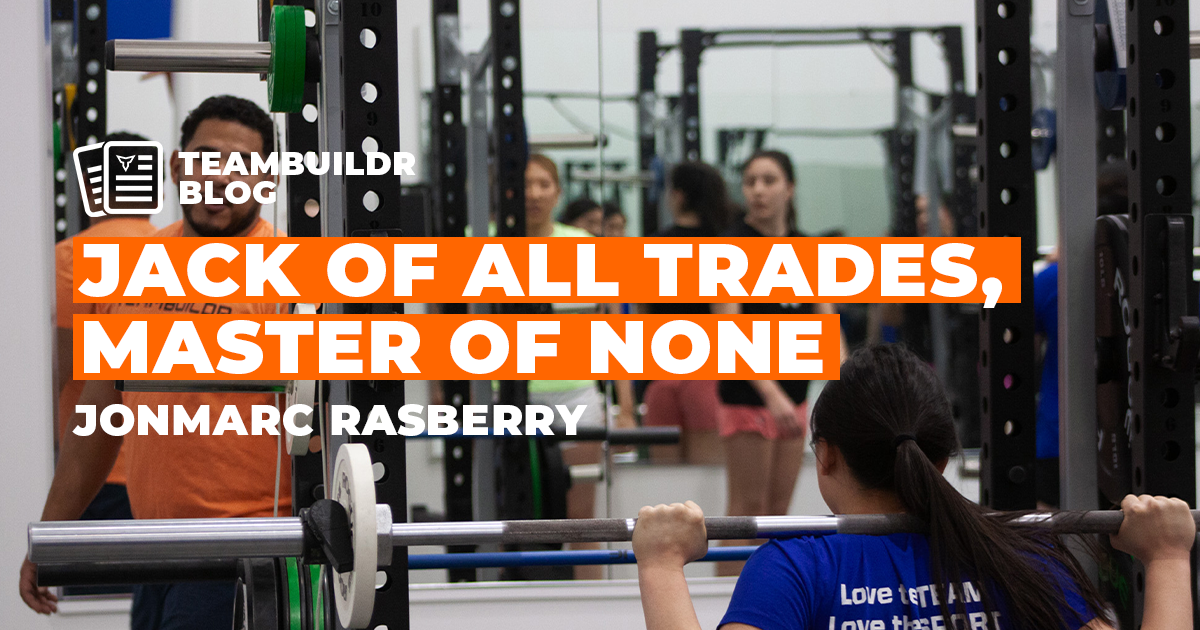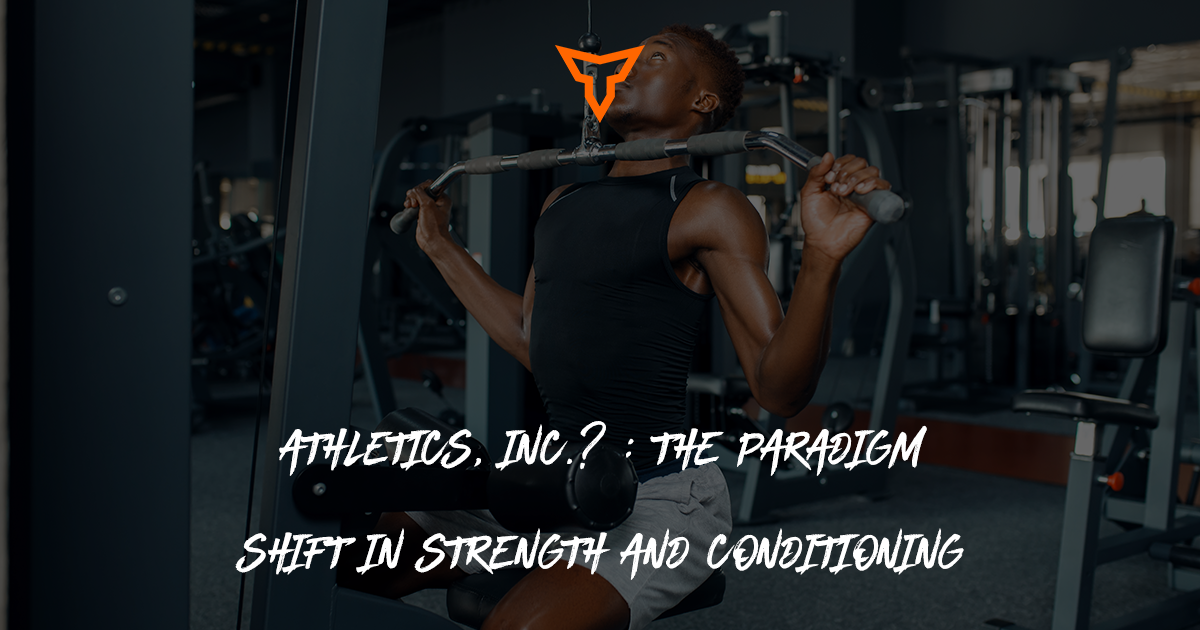How Early Sport Specialization is Killing Youth Athlete Potential
For the most part, we all know that early sport specialization is bad for athletes. And yet, we still see youth athletes as young as 10 and under signing up for prospect clinics and camps where they are tracking 40 yard dashes, jump heights, and throwing speeds/distances, all to tell athletes and parents how talented they are right now at the age of 8 or 9. Then based on those numbers parents will sign their athletes up for endless private leagues, hire special skills coaches, and travel across the country to showcases because they think their kid might be falling behind. All this leads to the thought process of if they fall behind they’ll never get on the best teams, and if they don’t get on the best teams they’ll never get a scholarship, and if they don’t get a scholarship they won’t go pro.
Meanwhile in that same sport, some kid who has never played will start playing his or her sophomore or junior year of high school and suddenly be the best player on the team, while the kid who specialized in the sport since 2nd grade is hardly playing anymore. So how does this happen?
Fun fact, there have been 20,447 MLB players in history. 64 of them were in the Little League World Series. It’s extremely possible, and even very common for athletes to peak early in their athletic careers. Early on they showed a natural talent for their sport so they go all in on it and become a youth phenom. If you think back to old YouTube videos of youth all-stars or youth athlete phenoms, they rarely make it to the big leagues. I’m not saying none of them make it, I’m saying most of them don’t. The reason they don’t is because of two main reasons. Burnout, and overuse injuries.
Burnout
I currently own a youth sports performance facility that caters to athletes ages 10+. None of our athletes play their sport for only one season. And a lot of them will play for more than one team or league within the same season. For example, we have soccer players who will play for their school in the Fall, but then for the rest of the year play in multiple leagues for multiple teams. Some families are even traveling over an hour to play and practice multiple times a week. This isn’t counting tournaments and showcases. And all of this typically starts by the age of 10 or 11 if not sooner.
So, what happens to an athlete that starts playing a sport when they are 7 or 8, and they play that sport, and only that sport, virtually every week until they are 18? They may get very good at their sport, but will they still love it and want to continue to play it in college and beyond (assuming they are good enough)? Some will. But it’s also very likely that they will get bored of their sport and not want to play it anymore. They’ve known nothing but that sport for over a decade and now for maybe the first time, they get to decide what they do next without their parents telling them what they should be doing. Let’s face it, in the above scenarios there is almost always a parent pushing their son or daughter to do more within the sport.
I’ve had more than a few athletes who were good enough to play in college at some level, but actively chose not to simply because they finally had an opportunity to rest, not play the sport, and explore new things, new activities, and new interests they didn’t even know they had. It’s possible that while spending all that time playing soccer, a kid was actually really good at tennis, and enjoys tennis more, but had no idea he liked it until he left for college because he always focused all of his attention on soccer. All his parents had to do was get him into more sports and a higher variety of activities and he might have ended up playing any number of sports in college.
In fact, I would go so far as to say any athlete who has the requisite athleticism (good conditioning, decent strength, and reasonable hand/eye coordination) can play a sport in college if it’s the right sport for them. But the only way we can know that is if they are given a wide variety of choices, and develop a wide variety of physical skills early in life. Russian athletes actually know this better than most. In Russia, it is very common for youth athletes to play many sports until they can hone in on the one that they are the best at. Only then do they start to specialize.
Overuse
The next factor (not counting actual skill) that will keep an athlete from furthering their athletic career is injury; specifically overuse injury. An overuse injury is essentially an injury that occurs in the body as a result of repeating the same or very similar movement over and over again until there’s so much wear and tear that the joint, ligament, tendon, muscle, or bone, finally breaks or tears, or becomes too painful to move in that way anymore. A study by Jayanthi et al., (2015) showed that athletes were over twice as likely to sustain an overuse injury if they fit the following three criteria: training year round (> 8 months of the year), chooses a single main sport, and quits all other sports to focus son that one sport.
Two other studies suggest that early sport specialization which neglects movement diversification puts youth athletes at a disadvantage for developing the necessary neuromuscular skills to help prevent overuse injury (Gould & Carson 2004 and Lidor and Hackfort 2009). This simply means that with repeat movements, there is a continuous strain on one particular set of muscles, ligaments and tendons, leading to a disuse of other areas of the body that can eventually lead to injury. For example, in swimmers, if the scapula can not protract and retract effectively, or move inferiorly and superiorly as it should, then the glenohumeral joint itself will take the brunt of the force of movement leading to issues surrounding the labrum.
The research and empirical evidence is clear, early sport specialization is not the way to long term success in sport. If an athlete wants to be in the game for the long haul, they need to diversify their activities early in their physical development. However, we cannot ignore the reality that as an athlete starts to get older, they will likely start to phase out those other activities for their true sport.
Strength and conditioning is the best tool at an athletes disposal to ensure that they are not only strengthening their bodies for the rigors of their sport, but also continuing to get a variety of movements that they would otherwise not experience in their games and practices. This is why a good, well rounded strength program will focus on training GPP (General Physical Preparedness).
The worst thing an athlete can do in the weight room is attempt to mimic the movements of their sport in the weight room with an added load. Imagine a tennis player who spend a couple hours at practice working on serving, an aggressive high speed overhead movement; then they go into the weight room and now they do the same movement with a cable machine trying to “strengthen” that movement. Not only will using weight alter the movement negatively, but it will now continue to stress the shoulder joint with added load.
A proper strength program would instead, not just train the shoulder to withstand hours of practice, but focus on general full body strength and movement to ensure that the entire musculoskeletal system is prepared for not just the sport itself, but life in general from the ground up.
In closing, if an athlete does not wish to participate, or cannot participate in multiple sports throughout the year, then a well rounded strength and conditioning program is not just recommended, but required to ensure long term athletic success.
Subscribe to our blog
Subscribe to receive the latest blog posts to your inbox every week.
Related posts

Developing Elite Human Beings in Sport

Jack of All Trades, Master of None in Coaching


